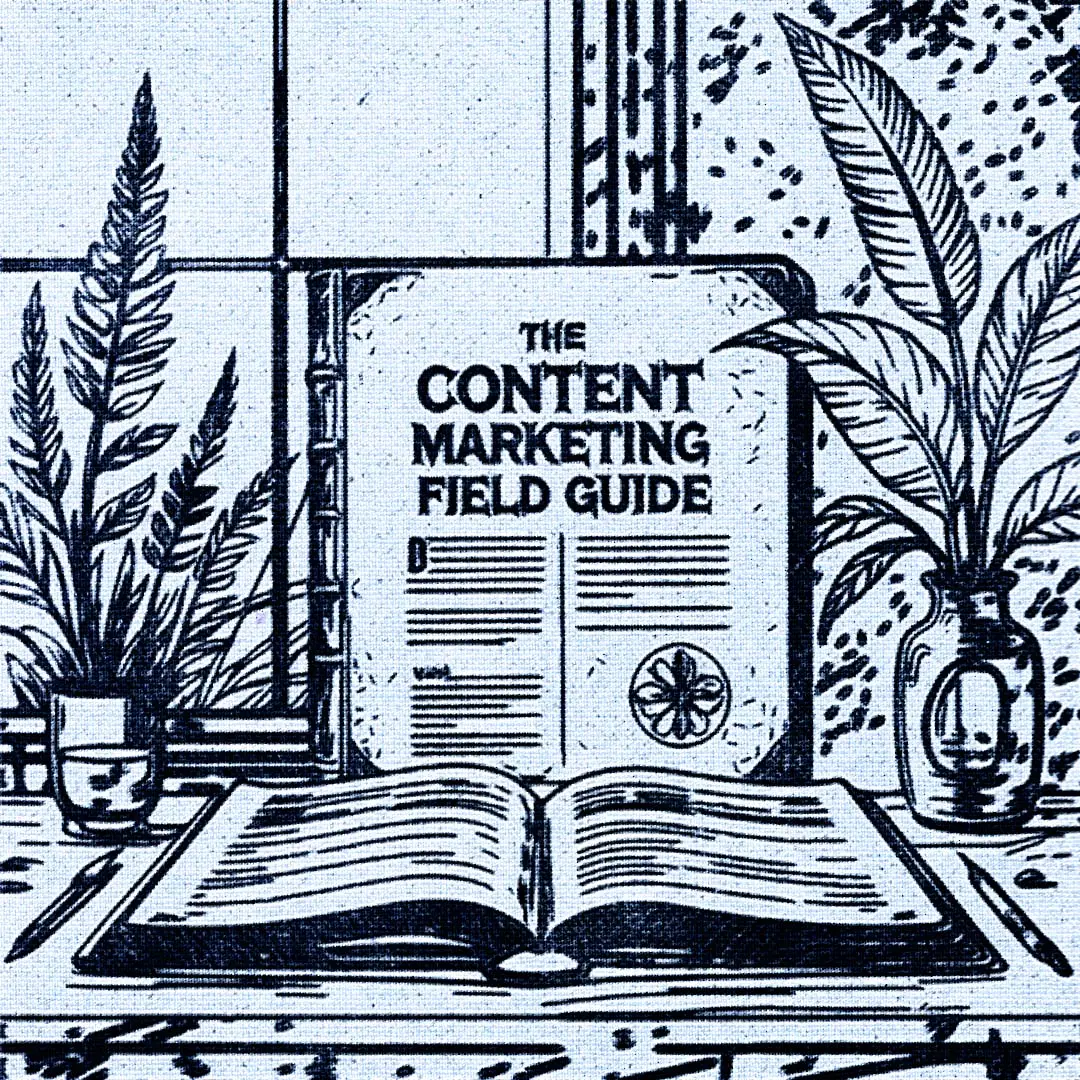“Content marketing bridges the gap between what brands produce and what consumers actually want” – Michael Brenner
What Is Content Marketing?
Understanding the Definition of Content Marketing
Content marketing is your compass in the ever-expanding digital landscape, guiding your audience through your brand’s narrative. It’s about creating content that’s not only valuable and relevant but also consistent enough to keep your audience engaged over time.
Why Content Marketing Matters for Modern Businesses
In a world where every market feels as crowded as a popular trailhead on a sunny day, trust, brand awareness, and customer loyalty are the trail signs that keep you from getting lost.
Content marketing helps forge these signs, building connections that are not just about transactions but about creating experiences that resonate with people.
Content Marketing vs. Traditional Marketing
Traditional marketing shouts from the mountaintops; content marketing talks face-to-face. It’s the difference between a billboard and a guide who travels with you, pointing out the sights and sounds of a landscape filled with stories, teaching you about the terrain as you go.
It’s a strategic approach, fostering meaningful interactions with your audience.
Our Content Marketing Philosophy at EV Egency:

Inspired by a profound commitment to authenticity and customer empathy, our marketing philosophy centers on creating genuine connections through thoughtful communication.
Empathy and Understanding
True marketing begins with empathy—understanding and addressing the real needs and challenges of your customers.
Emotional Connections
Marketing should evoke emotions, connecting on a human level to foster loyalty and trust.
Authenticity
Prioritize honesty and transparency in your marketing efforts to build long-term credibility.
Purpose-Driven Marketing
Align your marketing with your brand’s mission to resonate deeply with your customers’ values and needs.
Storytelling as Strategy
Utilize storytelling to create compelling narratives that captivate and engage your audience, providing them with a sense of connection and belonging.
The Core Elements of a Content Marketing Strategy

Content is the map that guides your audience through the digital wilderness to your brand.
Defining Your Target Audience
Who are you guiding through this terrain?
Understanding your audience is like knowing what kind of wildlife you might encounter. Are they seasoned adventurers or weekend picnickers?
Crafting buyer personas helps tailor your content to meet their specific needs and expectations.
Setting Clear Goals and Objectives
What landmarks are you aiming for? Without clear objectives, content marketing is a hike without a destination.
Setting goals ensures every piece of content is a step towards somewhere your business needs to go, whether it’s increased engagement, more leads, or deeper customer loyalty.
Content Creation and Optimization
Just as a trail needs to be clear and well-maintained, so does your content.
Planning, producing, and refining your content ensures it’s always fresh, relevant, and engaging. This is where you put your best foot forward, crafting messages that speak directly to your audience’s hearts and minds.
Strategic Content Distribution
You wouldn’t leave a trail map in a drawer. Likewise, content needs to be shared where it can be seen—social media, email, and even paid campaigns.
It’s about spreading the word, expanding your reach like a network of trails connecting scenic overlooks.
Measuring and Analyzing Success
Every explorer keeps a logbook, and every marketer should measure their progress.
Tracking KPIs like engagement, traffic, and conversions helps you understand which trails are popular and which need a new direction.
Types of Content Marketing

Blog Posts
Like long, scenic paths, blogs offer rich experiences that delve deep into your world, educating and engaging customers as they journey through your content.
Video Content
If a picture is worth a thousand words, a video is worth a million. Videos connect visually and emotionally, showing your audience the world through your eyes.
Infographics
Some trails are best traveled with a guidepost, and infographics provide clear, visual markers that break down complex data into manageable, understandable pieces.
Podcasts
Imagine sitting around a campfire, sharing stories. That’s what podcasts create—a space to engage in an ongoing conversation with your audience.
Interactive Content
Interactive content engages like the hands-on exhibits at a nature center, inviting active participation that deepens the engagement.
Case Studies and White Papers
Showcase your journeys and the landscapes you’ve mastered. Case studies and white papers build credibility by demonstrating your knowledge and experience.
SEO and Content Marketing: A Perfect Pair

Keyword Research for Content Marketing
Discovering the right keywords is like finding the trails your audience loves to explore. It ensures that the paths you forge get traffic.
Optimizing Content for Search Engines
Optimizing your content with SEO best practices is like clearing the trail for easy travel. It involves everything from the strategic placement of signposts (keywords) to ensuring the trail is easy to navigate (user experience).
The Role of Backlinks in Content Marketing
Backlinks are like recommendations from fellow hikers. They tell search engines that others vouch for your content, enhancing your site’s credibility and rank.
Measuring SEO Success in Content Marketing
Use tools like Google Analytics to track how well your content performs. It’s like checking a GPS to ensure you’re still on the right path.
The Power of Storytelling in Content Marketing

Why Storytelling Resonates with Audiences
Stories are the campfires around which we gather, the shared experiences that bond us. They turn simple messages into resonant narratives that forge deeper connections with your audience.
Crafting Stories That Reflect Your Brand
Your brand’s story is its identity, its unique mark on the world. Like a flag planted at a summit, it tells the world who you are and what you stand for.
Examples of Brands That Use Storytelling Effectively
Consider how brands like Red Bull capture attention through adrenaline-pumping content that feels like a dash down a mountain biking trail—exciting, daring, and unforgettable.
Emerging Trends in Content Marketing

Personalization
Like a guided tour tailored to your interests, personalization makes sure the content resonates personally with each member of your audience, enhancing engagement and loyalty.
Interactive and Immersive Content
Using AR/VR is like providing a virtual reality headset that lets users explore a simulated world, offering experiences that are as compelling as they are memorable.
AI and Automation in Content Creation
AI tools are like having the ultimate guidebook that’s constantly updated with new trails (content) generated to meet user demand efficiently.
Sustainable Content Practices
Revising and repurposing content is like trail maintenance. It keeps the path clear and enjoyable for future travelers.
Common Challenges in Content Marketing (And How to Overcome Them)

Maintaining Consistency Across Channels
Ensure your messaging is cohesive across all platforms, like a well-marked trail that keeps hikers oriented no matter where they start from.
Measuring ROI in Content Marketing
Determining the value of your content is crucial. It’s like verifying you’re getting enough return on the energy you invest in hiking up that mountain.
Staying Relevant in a Competitive Landscape
Keep abreast of evolving trends and audience needs, much like staying updated with the latest trail maps and environmental conditions.
Examples of Successful Content Marketing Campaigns
Case Study: HubSpot
HubSpot’s blog serves as a compass for many marketers, guiding them with strategies that enhance their skills and grow their businesses.
Case Study: Red Bull
Red Bull delivers exhilarating content that keeps its audience on the edge of their seats, much like a daring cliff dive.
Case Study: Adobe
Adobe uses its industry insights to craft authoritative content, establishing itself as a leader in the digital marketing space.
Practical Tips for Implementing a Winning Content Marketing Strategy
Start Small, Think Big
Approach your strategy like a trek up a mountain—start with manageable goals and scale up as you build strength and confidence.
Focus on Quality Over Quantity
In a world brimming with content, quality cuts through the noise like a well-forged blade.
Encourage Community Engagement
Create a community around your brand as inviting as a campfire, where every comment and share adds another log to the flames.
Conclusion: Grow Your Brand with Content Marketing
Why Content Marketing Is Essential for Business Growth
Content marketing isn’t just part of the journey—it’s essential for guiding your business to new heights, attracting more eyes, and building paths that lead to lasting customer relationships.
Take the Next Step
Start by mapping out your strategy and preparing for a journey that not only meets but exceeds your strategic goals. Dive into this adventure with the confidence that content marketing is not just part of the journey—it’s a pivotal element of business growth.
Frequently Asked Questions About Content Marketing
Content marketing is a strategic approach focused on creating and distributing valuable, relevant, and consistent content to attract and retain a clearly defined audience — and, ultimately, to drive profitable customer action.
The 3 C’s of content marketing are:
- Content – The creation of high-quality, valuable content that resonates with your audience.
- Context – Understanding the setting or environment where your content is shared, ensuring it is relevant to the audience’s needs.
- Connection – Building relationships with your audience through your content, fostering trust and engagement.
Examples of content marketing include blog posts, videos, podcasts, infographics, social media content, ebooks, newsletters, and webinars. Each type serves to inform, entertain, or educate the audience, building a relationship over time.
A content marketer strategizes, creates, and shares valuable content to attract and retain customers. This role involves planning content, researching audience needs, creating and editing content, and analyzing engagement and performance metrics to refine strategies.
To start with content marketing:
- Define your goals and audience – Understand what you want to achieve and who you are targeting.
- Conduct a content audit – Review existing content to determine what works and what doesn’t.
- Develop a content strategy – Plan types of content, publishing schedules, and distribution channels.
- Create and distribute content – Produce high-quality content tailored to your audience and share it across selected platforms.
- Measure and adjust – Use analytics to track performance and tweak your strategy as needed.
The primary goal of content marketing is to attract and retain customers by consistently creating and curating valuable content with the intention to influence consumer behavior and enhance profitable interactions with the brand.
Marketing is a broad discipline that encompasses various strategies and tactics to promote products or services, including advertising, sales, and distribution. Content creation is a subset of marketing focused specifically on producing engaging and informative content that supports these broader marketing goals by providing value to the audience.
Content marketing is valuable because it builds trust and relationships with potential and current customers, establishes brand authority, improves conversions, and enhances SEO efforts by driving organic traffic and engagement.
Keep Growing • More Dispatches from Basecamp
Discover essential tips for choosing the best web design agency. Learn how EV Agency can guide your business to success with custom web design solutions.
Learn what digital marketing is in simple words. Discover how it connects businesses to online audiences through SEO, social media, and email.
Discover EV Agency’s digital marketing services tailored to elevate your brand. From SEO and content creation to video marketing, we offer customized strategies to drive growth.
Discover how to choose the best video production company in Vancouver. Learn what factors to consider for effective video marketing.
EV Agency is your trusted digital marketing outfitter. From content creation to advanced ad targeting, we provide the tools and expertise to help your small business thrive. With EV Agency by your side, your brand’s campfire will burn brightly in the social media wilderness.






